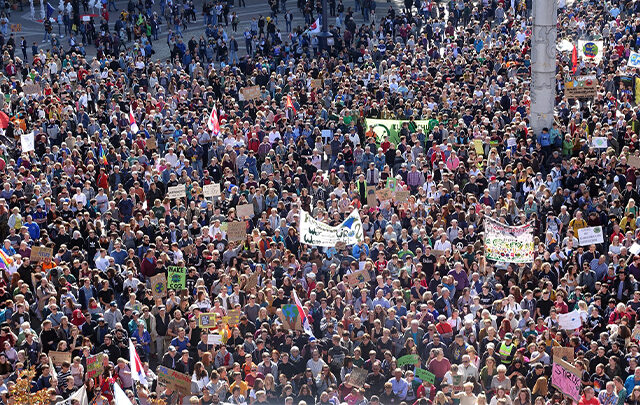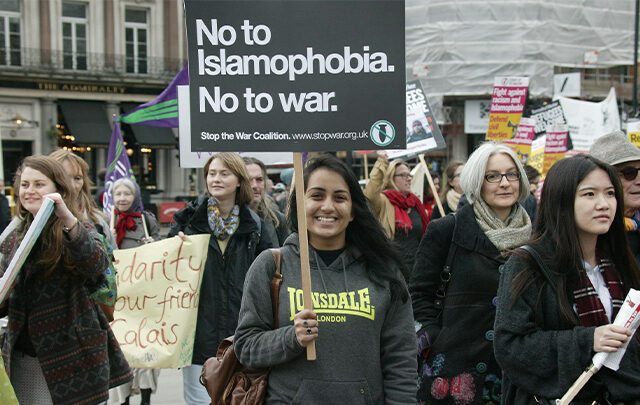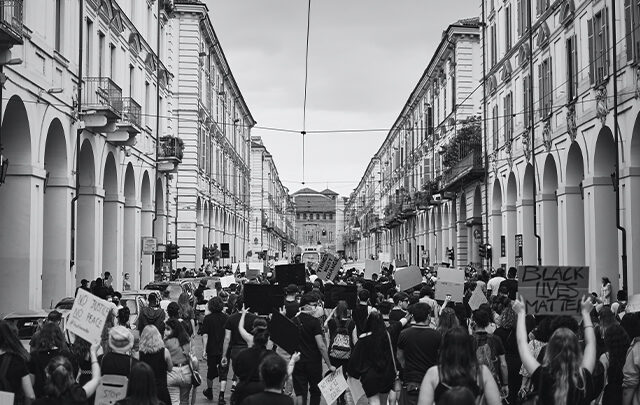A rally is a mass presence of citizens in a certain place for public expression of public opinion about urgent problems of predominantly socio-political nature.
Demonstration – organized public expression of public sentiments by a group of citizens with the use of posters, banners and other means of visual propaganda during the movement.
A procession is a mass gathering of citizens along a pre-determined route to draw attention to a certain problem.
Holding a mass event under opposition slogans is a classical form of organized street protest. An opposition organization, in order to confirm its claims to participate in the process of making state decisions, claims to form government bodies, and to demonstrate public support for its ideas, is objectively determined to provide mass street support for its activities. Therefore, most opposition parties strive to organize at least a minimum number of truly mass demonstrations against the initiatives of the current government and in support of their own ideas during the year.
The preparation of a mass event concentrates on a number of basic organizational directions:
Determining the date of the event. The date is usually fixed to an anniversary, or to a certain informational occasion (such as the consideration in parliament of a legislative initiative against which the opposition is opposed), thus adding meaning to the date on which the event is scheduled. In addition, in order to maximize the turnout of activists and supporters, mass events are usually scheduled for weekends.
Coalition policy. It consists in involving allied political and social organizations in organizing the event by its initiator. As a result of the agreements, an organizing committee of the event is formed, which includes representatives of all the organizations that decided to participate, and who distribute organizational functions among themselves, determine the shares of financial participation in the formation of the budget of the event.
Mobilization of the Activists. To ensure that the street event is massive, it is necessary to prepare in such a way that a core of participants is formed from the activists of the organizing associations, i.e. people who will definitely take part in the event. It is activists who most often carry banners and flags, provide noise support for the event, while people who come to participate in the rally, but are not directly related to any of the organizations organizing it, usually prefer to behave more passively, limiting their participation to simply being among the participants.
It is preferable to gather the activists some time before the start of the event, and before people move to the protest action it is necessary to assign them to coordinators and conduct a general briefing.
Provision of media support can be organized by implementing the following organizational tasks:
- formation of a pool of information partners (organization of work with friendly opposition media, interested in covering the event, prompt provision of exclusive information to the editorial boards of the relevant media and placing announcements);
- placing advertising of the event in the media space (if the budget of the event allows for it, it is effective to place announcements of the event in non-political media on a commercial basis);
- Launch of the Internet site (interactive posting of information related to the preparation of the event on the Internet is a relatively inexpensive tool for rapid notification of both the media and interested citizens, supporters and activists);
- A press conference on the eve of the event (creation of an additional informational occasion, connected to a public appearance of leaders of organizations, holding a mass event, right before the event, will warm up the interest of both mass media and the public in the event).
- Distribution of campaign materials announcing the event is usually carried out through the following distribution channels:
- informational (“talking”) picket. It is displayed in places of mass accumulation of people (subway stations, platforms in front of the passages of universities, factories, etc.). Optimal time is the beginning and end of the working day. Number of participants – 2-3 people. Necessary attributes – symbols (flag, cape) and a poster with a bright, eye-catching poster placed on it. The essence of the information picket – distribution of leaflets to passers-by with an announcement of the upcoming mass event and personal invitation to take part in it;
- direct-mail (targeted mailing). Political and public organizations usually have bases of supporters, prepared, for example, in the course of pre-election or civil public-political campaigns. Mailing out personal invitations signed by the leader of the association to supporters can mobilize a significant portion of them to participate in the event;
- Distribution of informational leaflets through mailboxes is a classic method of fieldwork by public associations. The organizing committee should prepare a database of homes where it is planned to distribute leaflets through mailboxes. The database should contain the addresses of the houses, the number of apartments and entrance codes. Activists of the organizations organizing the event receive leaflets announcing the event and go through the entrances, putting them in the mailboxes. More or less serious effect from such method of distribution of the information is possible only at carrying out two waves of leaflets;
- spamming. Spam is an anonymous unsolicited mass mailing of e-mails, usually of advertising nature. The technological chain of spammers looks like this:
- Collection and verification of recipients’ email addresses. Classification of the addresses by type;
- Preparation of “mailing points”, i.e. computers, through which spam is going to be sent;
- creation of software for sending spam;
- searching for recipients;
- creation of advertisements for a particular mailing;
- mailing out.




MOST COMMENTED
Forms of protests
Why would people go to protests?
Forms of protests
What is an internal protest?
Largest protests
Khaki ball: the loudest anti-war protests and actions.
Student protests
“The Events of June 4” in China, 1989
Student protests
“The Night of Tlatelolco” in Mexico, 1968
Student protests
Massacre at the University of Kent, 1970
Student protests
Battle of Valle Giulia, Italy, 1968